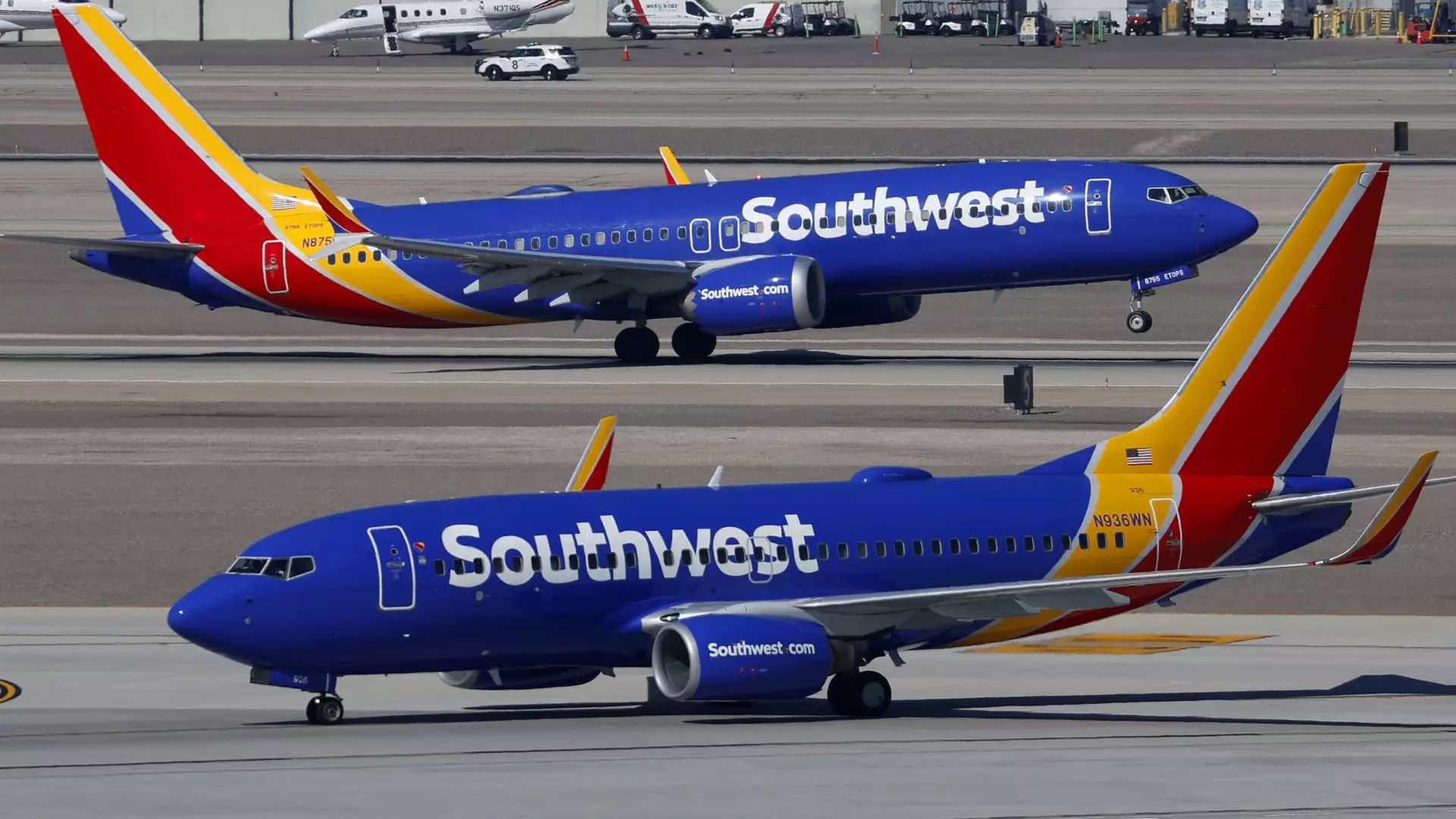On Wednesday, Southwest Airlines made an alarming declaration: it will slash its capacity in the latter half of the year due to an evident downturn in domestic bookings. Such news is a glaring indicator of an airline grappling not just with market fluctuations but also with deeper systemic issues. The company anticipates unit revenue to stagnate or drop by as much as 4% in the upcoming quarter compared to last year. This declaration is not just a grim statistic; it underscores a troubling trend for an airline once celebrated for its robust business model.
With respect to profit forecasts for 2025 and 2026, Southwest has opted for radio silence, citing “macroeconomic uncertainty” as a barrier to reliable predictions. This kind of indecisiveness from management is especially concerning in an industry that thrives on projections and confidence. Earlier in the month, United Airlines and Delta Air Lines, both industry giants, similarly announced capacity reductions, raising the question of whether the current travel landscape is too traumatized to support the former standards of growth.
The Earnings Paradox
Interestingly, Southwest earlier reported better-than-expected earnings for the first quarter, a development that appears at odds with its later capacity cut announcement. While it recorded a net loss of $149 million—an improvement from a more substantial loss of $231 million a year prior—this optimistic twist is overshadowed by a growing list of challenges. Revenue hovered at just over $6.4 billion, eclipsing Wall Street’s expectations, yet the bigger picture remains concerning. In a volatile market, how meaningful are these so-called “positive results” if they are merely a temporary bandage on deeper wounds?
Management’s reluctance to reaffirm future earnings guidance creates an unsettling atmosphere that should, frankly, alarm analysts and investors alike. The dialogue surrounding Southwest has shifted from profitability to existential survival, transforming the airline’s reputation as a formidable budget carrier into a cautionary tale of missteps and reactive strategies.
Radical Transformations and Strategic Responses
The past year has seen Southwest Airlines undertake dramatic changes to its age-old business model. From engaging platforms like Expedia to introducing assigned seating and restrictive economy tickets, each shift was meant to bolster revenue streams amid mounting pressure from activist investors. Yet, these strategies raise significant questions: Are these changes designed to adapt to current consumer preferences, or are they desperate maneuvers born from the growing threat of competitors with more favorable offerings?
Perhaps most troubling is Southwest’s impending move to charge passengers for checked baggage after decades of complimentary service. This shift—from customer-friendly to cost-centric—signals a departure from the core principles that once differentiated Southwest from its competition. The risk of losing its loyal customer base in exchange for short-term financial gains is a gamble that could backfire dramatically.
Confronting Investor Skepticism
The looming quarterly earnings call will likely expose the cracks in the company’s foundation as eager analysts dive deep into the implications of these capacity cuts and business model transformations. Analysts will demand clarity regarding the airline’s path forward amid economic uncertainty. Will Southwest’s leadership maintain its resolve, or will fear dictate the narrative of its future? Given the challenges presented, one can’t help but sense a pivotal moment on the horizon—one that may redefine the airline as it navigates this treacherous terrain in the coming years.
While some may cling to the hope of a recovery, the reality suggests a more sobering examination is in order. Will Southwest Airlines emerge from this turbulence renewed or will it be yet another case study in corporate decline? Only time will tell.

